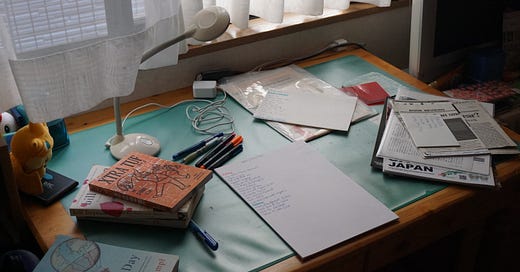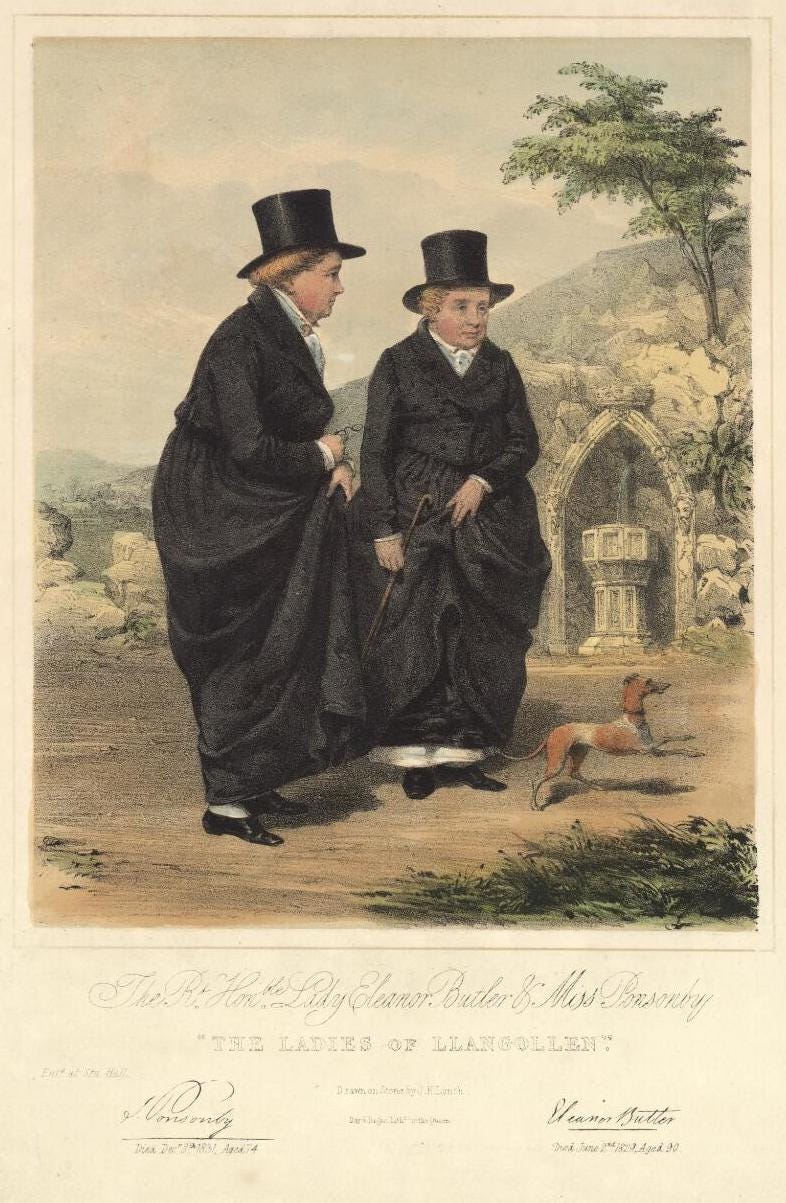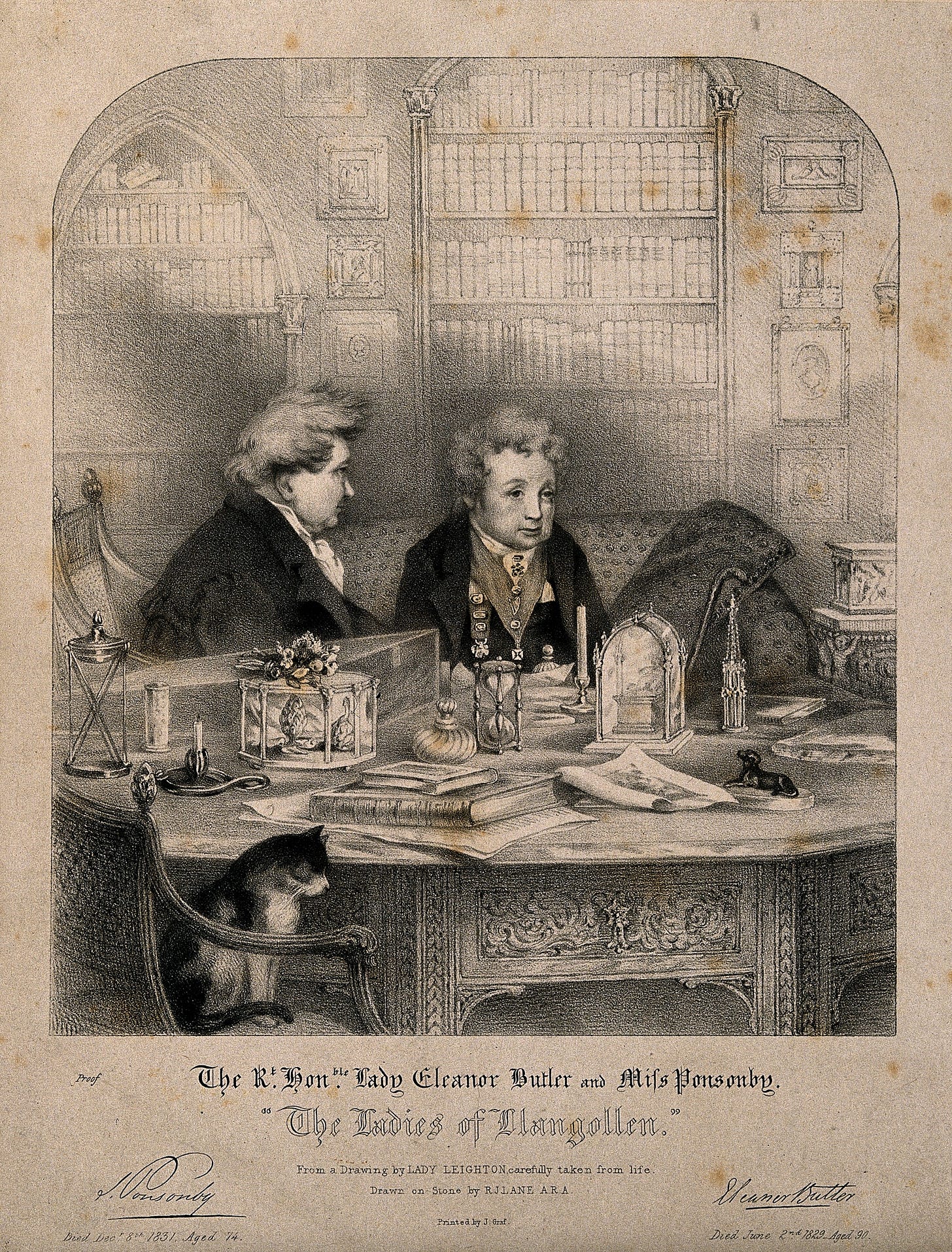The joy of idling and sharing
Hi there,
I’ve just finished reading Patricia Hampl’s The Art of the Wasted Day.
It’s a delightful, evocative, thoughtful meditation on the joys of leisure, idling, loafing - call it as you want - while getting lost in thought.
Among the people who quit the social rat race in favor of a sort of monastic life, Hampl introduces two women who during their time (late 18th, early 19th century) became known as the Ladies of Llangollen.
Eleanor Charlotte Butler and Sarah Ponsonby first met in their families’ salons - Sarah a child of thirteen; Eleanor a sharp-tongued lady 16 years her senior, going nowhere in the marriage market.
They became closer and closer (nobody knows how close, but that doesn’t matter) until they moved to rural Wales where they enjoyed and unconventional life devoted to reading, writing, gardening and taking long walks around their house.
As Hampl notices in her book, “writing – or passionate reading (which comes to the same thing in ardent bookish youth) – was the first attachment between Sarah and Eleanor.
“It was at first and for years before their elopement and epistolary friendship, words on the page allowing the two friends an intimacy that conversation could not equal, deepening attachment, confirming intimacy, heart to heart, mind to mind.”
These women picked up a pen the way we tap on a cell phone
While reading about Eleanor and Sarah’s story, I was reminded of the “good old days” when I used to write and receive letters and postcards on a daily basis.
Having being a zine maker and a very active mail artist before the e-mail became a common thing, my mail box was always full.
The email and social media such as Facebook, Twitter and Instagram allow us instant communication and constant contact with people everywhere, but I still mourn the demise of the letter as the carrier of deeper thoughts and feelings.
As Hampl says in her book:
These women picked up a pen the way we tap on a cell phone, passing the latest to each other in reams of sinuous, dependent-clause-heavy prose, transcribing whole volleys of dialogue from dinners and tea parties, unfurling descriptions of spring blossoming and autumnal murk from long walks in all weathers. (…) and sometimes taking on questions of the day – slaveholding, environmental depredations, the recent alarming rumors from France [the French Revolution].
The offhandedness and the intimacy of letters could also convey stray thoughts, arpeggios of feeling, formless forms. All this the Ladies and their correspondents adopted as essential to life.
But the analogy to the cell phone is wrong: the Ladies and their friends weren’t yakking, they were writing, sentences and paragraphs lending their expression (…) formality and a chance of longer shelf life (…).
Theirs was a writing world, a small sphere by the standards of our mass culture, moving not over media outlets but across the well-oiled tracks of correspondence.
Letters were copied and shared, quoted, read aloud to visitors. And of course everyone was keeping a journal, annotating encounters with the eye not of an historian but a photo-novelist, keeping track, keeping score, assessing and attesting – and then quoting themselves from their journals back into their letters, a kind of self-publishing editorial project that kept these supposedly idle women very busy.
I guess what I’m trying to say is that I long for this kind of sharing culture where real communication went far beyond clicking a simple LIKE or a thumbs up.
I miss the letters - they are more intimate; they bring us nearer to our friends - and I hope Tokyo Calling will be for us, my dear reader, not just a one-way newsletter but something akin to correspondence and sharing our thoughts.
Please help spread the word about Tokyo Calling
and consider subscribing. Thank you.
In the meantime, I leave you with one of my favorite tunes.






